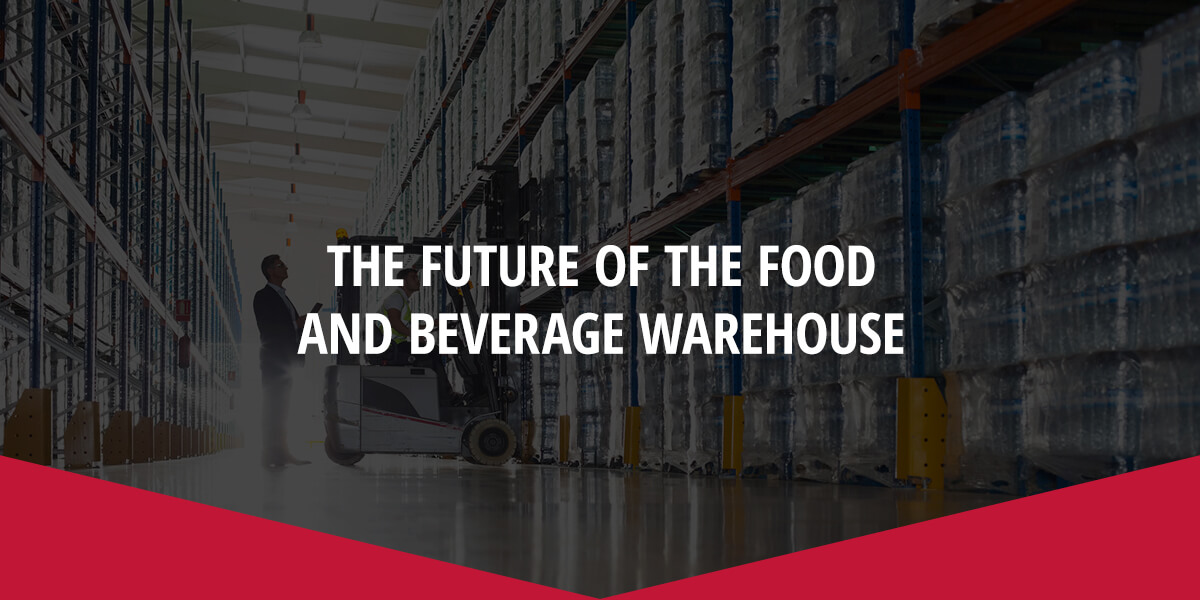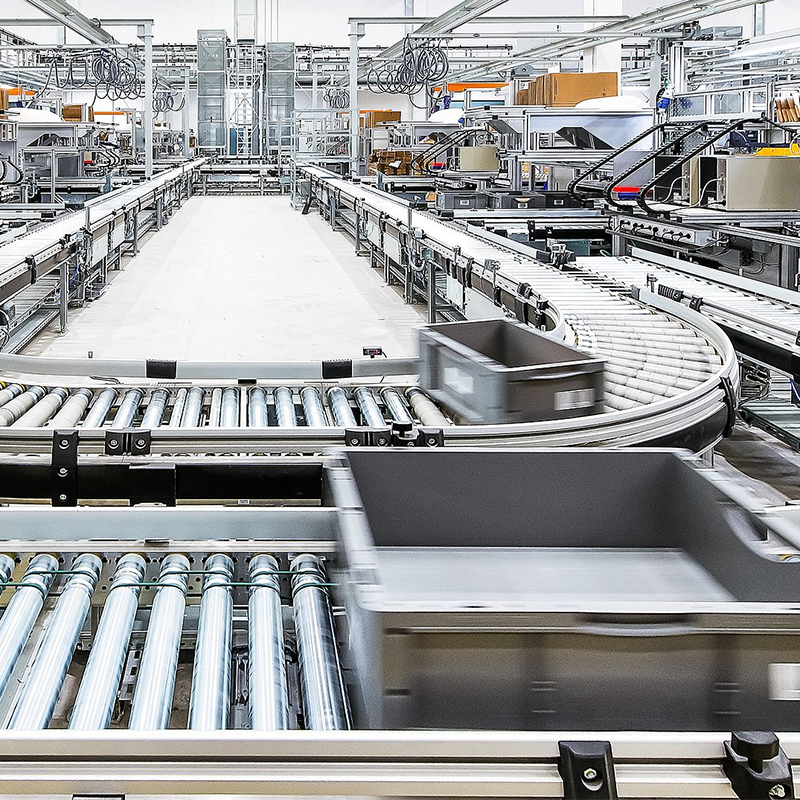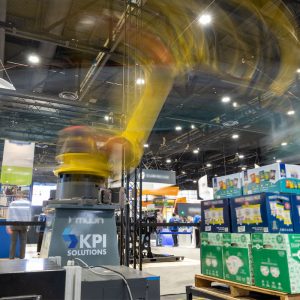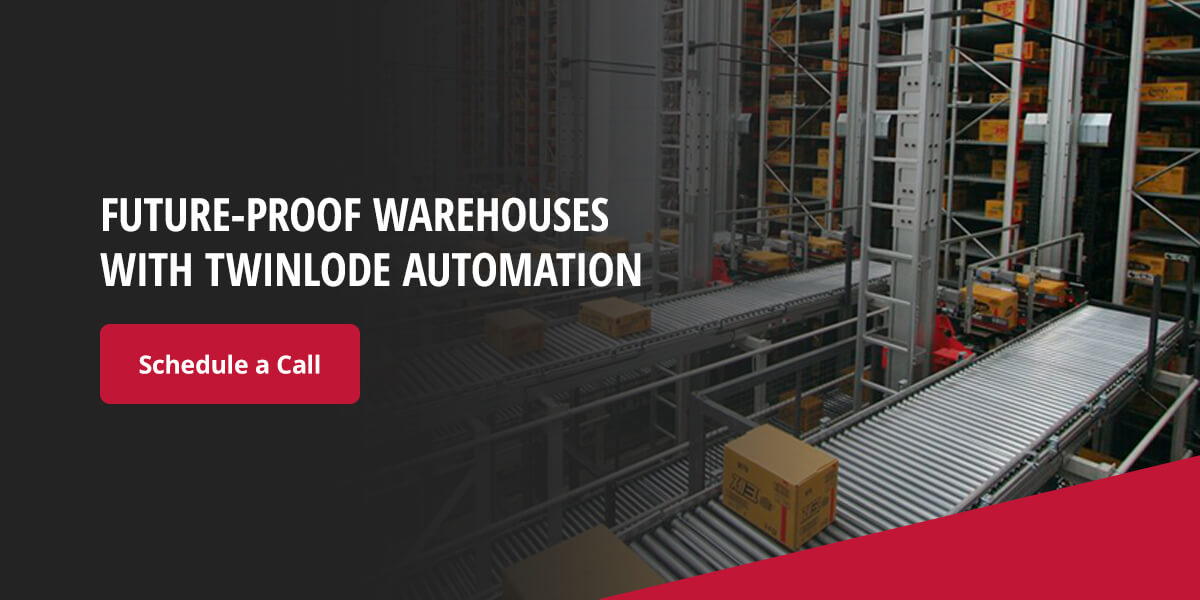
17 Oct The Future of the Food and Beverage Warehouse
Supply chain issues remain common in every industry across the nation as businesses struggle to adapt to global supply chain disruptions and increased consumer demands. Due to these disruptions and many others, traditional warehousing and order fulfillment processes are becoming increasingly complex.
To remain competitive moving forward, food and beverage warehouses may need to reevaluate their current processes and implement new innovative solutions.
The Current State of the Food and Beverage Industry Supply Chain
The food and beverage supply chain is fast-paced and ever-evolving. The industry is rapidly transforming to meet shifting consumer demands. While change is nothing new, the speed of these changes presents unique challenges to warehouses and distribution centers in the food and beverage industry.
Demand from consumers, retailers and government agencies pushing for product traceability and supply chain transparency is consistently rising as a result of increasing food safety regulations. While these requirements are meant to make food products safer, they often introduce new obstacles to the supply chain.
In addition to concerns about food freshness, consumers also want to diversify their diets. The shift toward more variety naturally results in the proliferation of more complex SKUs — moving forward, warehouses and fulfillment centers will need to find new ways to manage more SKUs with smaller product quantities.
Similarly, there is an increased need for mixed-SKU pallets and cases, often referred to as “rainbow” pallets. Demand for customized meal preparation kits, such as those from companies including Hello Fresh and Blue Apron, has risen as a result of the pandemic. Because manufacturers need to package each meal with all the required ingredients, the kitting process for these operations is becoming increasingly complex.
Challenges Facing the Food and Beverage Supply Chain
These supply chain trends create unique challenges in the food and beverage industry. Food traceability and transparency are chief concerns for consumers. Finding new ways to work with supply chain partners is critical for maintaining productivity in the future.
1. Labor Shortages
Another challenge facing every industry — especially in the warehousing sector — is a nationwide labor shortage. Implementing automated solutions can make operations more efficient as long as there are still people on-site. Ideally, automated solutions should supplement human workers rather than replace them entirely — for example, have human workers manually picking small items while a robotic solution does the heavy lifting or repetitive tasks. The issue is that employees are consistently leaving the workforce faster than their employers can replace them, especially in warehouses.
2. Consumer Behaviors
Consumer behavior is also changing the food and beverage landscape. In response to growing inflation and economic concerns, consumers are increasingly trading down, or switching from higher-priced brands to more affordable options.
Despite rising prices, consumers are still buying the same volume of products. Price increases have led to an increased demand for more affordable brands, but demand still remains for higher-priced brands. These shifts in brand demand, caused by price increases, leads to further warehouse SKU proliferation.
Consumer desire for convenience is another factor driving change in the food and cold chain industries. As more consumers opt for frozen foods and meal preparation kits directly to their doorstep, warehouses have to adapt to meet these changes in behavior.
3. SKU Proliferation
Adding more products to inventory, such as new flavors of best-selling items, increases the number of SKUs a warehouse needs to track. This process is known as SKU proliferation, and it presents new challenges with long-tail SKUs.
While long-tail SKUs do not generate high sales volume, they can significantly increase overall revenue. This boost helps companies enter into new markets and diversify their product offerings to customers.
However, long-tail SKUs are more likely to be slow-moving inventory that occupies warehouse space for longer periods of time than more popular fast-moving SKUs, which sell quickly. Essentially, the more long-tail SKUs a company offers, the harder it will become to manage product slotting and storage space.
Solutions for These Challenges
Changing demands require innovative solutions. State-of-the-art warehousing technologies are emerging to streamline and simplify order fulfillment processes.
Automated Processes
Automated layer picking improves the efficiency of mixed-SKU pallet creation, which is rapidly emerging as an industry standard. Layer picking robots significantly reduce human error while speeding up pallet creation, enabling even a reduced labor force to meet order fulfillment and retailer demands.
- Conveyors
- AGVs & AMRs
- Layer Picking
To address labor shortages, companies can implement automated guided vehicles (AGVs) and conveyor to transport products throughout food and beverage distribution centers. AGVs are an excellent way to introduce automation to a warehouse, especially for cold storage applications, where harsh conditions can negatively impact human productivity. These vehicles can also be used in conjunction with automated storage and retrieval systems (ASRSs) to further propel a company toward digital transformation and achieving future growth initiatives.
Digital and Cloud Transformation
Embracing digital transformation is perhaps the most effective solution for inventory management challenges. For example, implementing cloud-based warehouse management systems (WMSs) can significantly improve operational efficiency and transparency in warehouses and fulfillment centers. WMS solutions enable end-to-end visibility by allowing accurate tracking of inventory movements, important key performance indicators (KPIs), and detailed process data in real time.
These solutions can also improve supply chain efficiency by providing accessible ways to manage employee tasks, yard management, and dock management for inbound and outbound shipments. Cloud-based platforms update information in real time, so supply chain managers can review data-driven dashboards in a single click to oversee operational efficiencies and issues.
For the best results, partner with a material handling integrator with proven industry success to consult on how to streamline workflows and maximize efficiency for your operation.
What to Expect for the Future of the Food and Beverage Warehouse
The food and beverage industry is constantly evolving. Moving forward, technological innovation is set to take over warehousing in this sector. While there is an upfront investment in warehouse automation and technological solutions, supply chains that participate now will gain greater agility to adjust both to current challenges and to the future demands they will face.
Direct-to-consumer fulfillment centers will see significant growth over the next five years — analysts predict that 20% of all warehouses will become fulfillment centers by 2027 due to the increasing popularity of e-commerce. This change will continue shifting the paradigm, which is requiring DCs to handle inventory at a case and unit level rather than a traditional pallet level. Fulfillment centers located near consumers can fulfill orders and meet customer needs quicker than traditional food and beverage warehouses.
A strong correlation also exists between automation expenses and labor costs. In general, more spent on labor means less spent on automation. As a result, AGVs and conveyor systems are likely to become a driving force in inter-facility transportation of goods, especially as it becomes more difficult to attract and retain skilled forklift operators. AGVs require less infrastructure than fully automated systems such as ASRS, making them an accessible choice for companies that are only beginning to invest in automation.
Other trends in automation that are likely to experience continued growth include:
- Mixed-case palletizing
- Loading and unloading trailers
- Robotic case picking
Prepare Your Warehouse For Future Trends With Twinlode Automation
Investing in automated warehouse solutions provides the tools to address both current and future challenges in the food industry supply chain.
By analyzing historical data and material flow while incorporating future growth objectives, Twinlode Automation will design and engineer a storage or material handling solution to solve current issues and optimize operations for the future. Schedule a call with Twinlode Automation to grow your warehouse potential.







